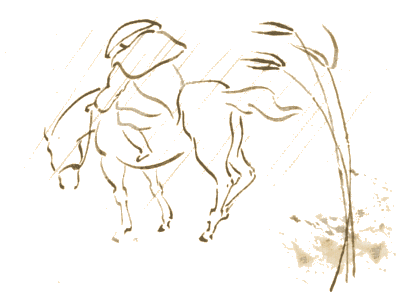Haibun is the name for a form in which haiku and prose are married. As in the best marriages, each lives its own life, but expands following the conjugation with the other.
|
A few years ago, Nobuyuki Yuasa, translator of Bashō's haibun, The Narrow Road to the Deep North (Penguin Classics), observed sorrowfully that in Japan there was now very little interest in haibun other than in this classic.
But the charm Western writers have discovered in haibun has begun to rekindle the spark in Japan.
Bashō's classic is a serial travelogue, a pilgrimage to places celebrated in history and cultural legend. His journey in 1689, on foot and by pack mule, covered 1230 miles in 5 months.
|

|
Very few haibun of this complexity have so far been achieved in the West. David Cobb's 10,000-word Spring Journey to the Saxon Shore (1997) is a notable exception and for the moment something of a benchmark.
The majority of haibun achieved so far are much more compact, unified in time, place and action around a single situation or incident, as in the example below.
|
| | |
|
| |
wind along the beach
an abandoned shoe
slowly fills with sand
Everyone comes here from time to time. Everyone needs to be alone. It soothes the mind to be among sea and stone. You can lose yourself between the endless and the particular. The conscious mind, like the sea, cannot make itself placid, but a random focus on a single unusual pebble can absorb all consciousness of your own existence.
sea-pierced stone —
getting down close to hear
what it makes of the wind
|
|
from Travelling Light, 2010,
by Graham High
|
| |
| | |
|
|
